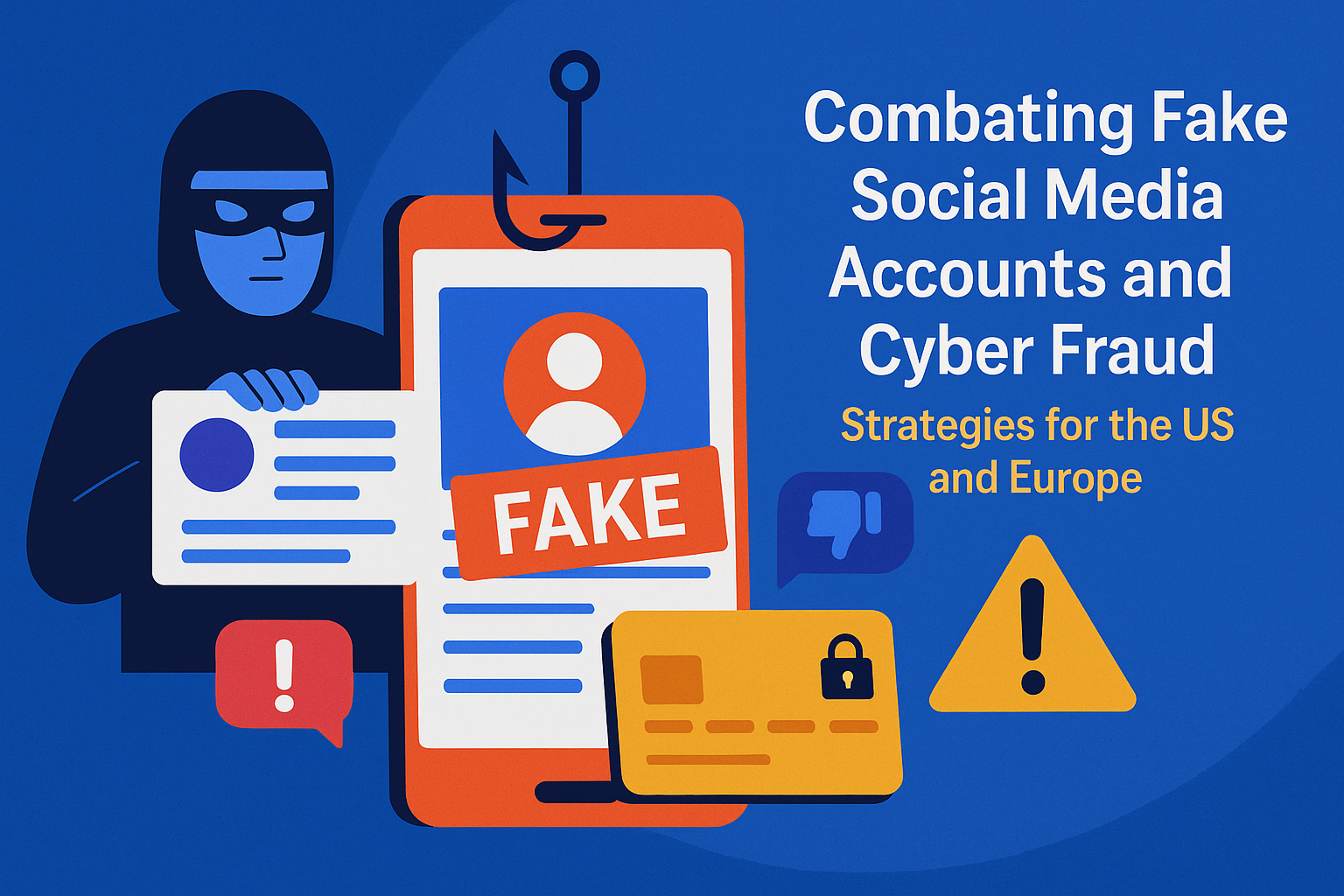
Combating Fake Social Media Accounts and Cyber Fraud: Strategies for the US and Europe
Fake social media accounts impersonating individuals, influencers, or businesses have become a significant concern across the US and Europe. In fact, according to the FBI's Internet Crime Complaint Center (IC3), identity theft and online impersonation accounted for over $6.9 billion in losses in 2023 alone. With cyber fraud threats escalating, proactive social media protection has never been more critical.
Why Social Media Protection Matters
Social platforms like Instagram, Facebook, Twitter (X), and TikTok allow users to build influential brands and foster connections. However, these same platforms are fertile grounds for cybercriminals. Without adequate social media protection, users face significant risks, including:
- Impersonation: Fake profiles pretending to be you or your brand.
- Phishing Scams: Fraudulent links targeting followers.
- Romance and Investment Scams: Scammers using stolen identities to deceive victims.
- Data Breaches: Unauthorized leaks of sensitive personal and client information.
- Online Harassment: Defamation and coordinated harassment campaigns.
The Rise of Fake Profiles in the US and Europe
Organized cybercriminal networks manage countless deceptive profiles, causing substantial harm. Key problems include:
- Fake influencer profiles targeting followers for financial gain.
- Brand impersonation selling counterfeit products.
- Phishing schemes disguised as giveaways or competitions.
- Fraudulent investment offers, particularly involving cryptocurrencies.
Europol reports that social engineering and impersonation scams increased by 25% across the EU in 2024, underscoring the growing threat.
How Fake Social Media Accounts Operate
Understanding the tactics of cyber fraudsters can help combat these scams:
- Impersonation: Scammers replicate genuine profiles, targeting followers directly.
- Phishing Links: Fake profiles distribute malicious links disguised as contests or investment opportunities.
- Scam Campaigns: Fraudulent profiles market scams involving counterfeit products, cryptocurrency fraud, and blackmail.
- Bot Networks: Hackers manage extensive networks of fake accounts to manipulate information and influence public perception.
Without vigilant social media monitoring, users often discover the damage too late.
Common Social Media Scams in the US and Europe
Awareness of prevalent scams is vital for protection:
- Fake Giveaways: Imitation brand profiles offering enticing prizes like electronics or luxury trips.
- Phishing Promotions: Messages from "customer support" soliciting login details.
- Influencer and Business Impersonation: Fake profiles asking for donations or investments.
- Investment and Crypto Scams: High-return financial schemes exploiting users' financial ambitions.
These scams negatively impact both individuals and businesses, eroding trust and causing significant financial losses.
Practical Strategies for Social Media Protection
Individuals and businesses should adopt these strategies:
- Account Verification: Secure official verification (blue tick) to reduce impersonation.
- Strong Privacy Settings: Limit profile visibility and routinely audit followers.
- Two-Factor Authentication (2FA): Implement 2FA to add an extra security layer.
- Regular Monitoring: Frequently check for fake profiles using reverse image searches and brand monitoring tools.
- Educate Followers: Inform your audience about common scams and clarify your communication protocols.
Reporting Fake Accounts on Major Platforms
Quickly report suspicious profiles:
- Instagram: Fake profile > Three dots > Report > Impersonation.
- Facebook: Profile > Three dots > Report profile > Pretending to be someone.
- Twitter (X): Profile > Report > Impersonation.
- TikTok: Profile > Share > Report > Impersonation.
For severe cases involving fraud, users should contact local cybercrime units, such as the FBI in the US or Action Fraud in the UK.
Combating Cyber Fraud: Initiatives in the US and Europe
Both the US and European governments have intensified efforts to combat cyber fraud:
- Legislation: The US Computer Fraud and Abuse Act and the EU Cybersecurity Act criminalize online fraud and impersonation.
- Law Enforcement: Agencies like Europol and the FBI actively pursue cybercriminal networks.
- Public Awareness Campaigns: Educational programs and campaigns raise awareness about cybersecurity threats.
The Role of AI and Tools in Social Media Protection
Advanced technology plays a crucial role in mitigating cyber threats:
- AI-powered Monitoring: Tools such as DarkTrace, Elastic, and IBM QRadar proactively detect impersonators and scams.
- Dark Web Scanning: Identifies illegal sale and misuse of credentials and images.
- Threat Intelligence: Keeps businesses updated on emerging threats and fraud tactics.
Businesses integrating these technologies can swiftly respond to threats, maintaining online credibility.
Best Practices for Businesses
To protect their brand and customers, businesses should:
- Train staff to recognize phishing and social engineering attacks.
- Employ centralized social media management systems.
- Promptly respond to impersonation, informing and safeguarding followers.
- Collaborate with specialized cybersecurity firms offering comprehensive fraud prevention and brand protection solutions.
The Human Cost of Fake Accounts
Behind each fake profile lies significant personal and financial damage:
- Financial losses due to scams.
- Reputation harm from identity misuse.
- Privacy violations resulting from leaked personal information.
- Erosion of trust among followers and customers.
Effective social media protection is essential to mitigate these impacts and safeguard users.
Conclusion
Your digital identity—whether individual or corporate—is precious. Vigilance, education, and strategic use of technology can significantly reduce the threat posed by fake social media accounts and cyber fraud. By proactively implementing these best practices, individuals and businesses across the US and Europe can confidently navigate and secure their digital landscapes.